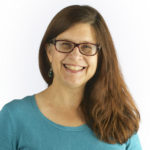While school officials have removed a controversial isolation booth at an elementary school in Longview, Clark County school representatives say a number of local schools have similar spaces to restrict and calm aggressive behavior in students with special needs who may be a danger to themselves or others.
Although Clark County districts have various names for the spaces — resolution rooms, quiet rooms, calming rooms, safety rooms and even seclusion intervention spaces — all districts reported that the rooms are used as a last resort and never are used for discipline.
“Sometimes, students have difficulty controlling themselves,” said Denny Waters, director of special education for Battle Ground Public Schools. “Students can lose it. They punch, kick, scream, yell. Using the room is a way to help the student calm down and to get control of their emotions.”
Tight regulations
All special education students must have an Individualized Education Program, or IEP, but only some IEPs include an aversion therapy plan that involves the possible use of a calming room. State regulations require schools to follow strict guidelines in using these spaces. Parents have signed off on the plan in advance, and they must be notified if their child is placed in a room. The staff must be thoroughly trained, and a student in a calming room must be supervised by an adult at all times.
Longview School District suspended the use of a padded isolation booth last month at Mint Valley Elementary after a photo of the closet-sized space was posted on Facebook, raising concerns it was being used for punishment.
School district spokeswoman Sandy Catt said Tuesday that the booth was removed over the weekend and that the district has decided to use an independent company to investigate how the padded booth was being used.
“As a long-term solution, the district is looking at building a different structure” that will conform with state rules as well as with the individual education plans of the special education students who use it, she told the Longview Daily News. “The district continues to work with the families of these children so that their needs are met during this transition time.”
Nine children with behavior issues had used the booth, according to initial reports, which said most children voluntarily used the space to control their emotions. Niki Favela of Longview told the Longview Daily News that her autistic daughter, Starr, 11, had been expelled from two schools for her aggressive behavior, but her time in the booth calmed her and brought self-control.
Local programs
In Vancouver Public Schools, spaces called resolution rooms are used at the campus of Fir Grove/VISTA, which is for “students with significant social or emotional behaviors or mental health issues,” said Kris Sork, the district’s communications director. “A resolution room is used only if a student is a danger to self, danger to others or a major disruption to the learning environment,” she said.
The school is operated by the district, but serves the entire ESD 112 region. About half of the students at Fir Gove/VISTA are from the Vancouver district.
Of the district’s 13 middle and high schools, five have resolution rooms; of the district’s 21 elementary schools, six have “specialized programs for students with emotional and behavioral disorders and for students who are on the autism spectrum,” said Sally Charuhas, executive director of special services for Vancouver Public Schools.
Charuhas said that by increasing training in positive interventions, the district has reduced the number of resolution rooms and the number of times the rooms are used. “Students who are accessing the rooms choose to do it as a sensory break to get some quiet away from the other students,” Charuhas said.
Evergreen Public Schools has aversion intervention rooms at the elementary, middle and high school levels. The rooms aren’t in every school, but they are in “most of the schools, because we have special education programs in all of our schools,” said Jay Buno, the district’s interim director of special services.
Buno said that although about 3,400 students in the district receive special education services and have IEPs, “only a fraction of a percentage have aversion therapy plans written into their IEPs.”
Four of Battle Ground’s 19 schools have calming rooms. “We have them specifically connected to classrooms with emotional and behavioral disabilities,” said Williams.
Camas Public Schools has resolution rooms in five schools, said Dana Lighty, director of teaching, learning and special services for the district. She said two of these five rooms currently are not used because no students in those schools have a plan that includes using a resolution room.
Washougal School District has only one resolution room, in an elementary school that houses the district’s structured learning classroom, said Allan Fleck, the district’s special services director.
The smaller Clark County school districts — Green Mountain, Hockinson, LaCenter and Ridgefield — contract with ESD 112 for special education services. Lori Simpson, ESD 112 deputy director, school and agency operations, said that none of those smaller districts have resolution rooms.
The Associated Press and Longview Daily News contributed to this report.
Susan Parrish: 360-735-4515; http://twitter.com/Col_Schools; susan.parrish@columbian.com.



